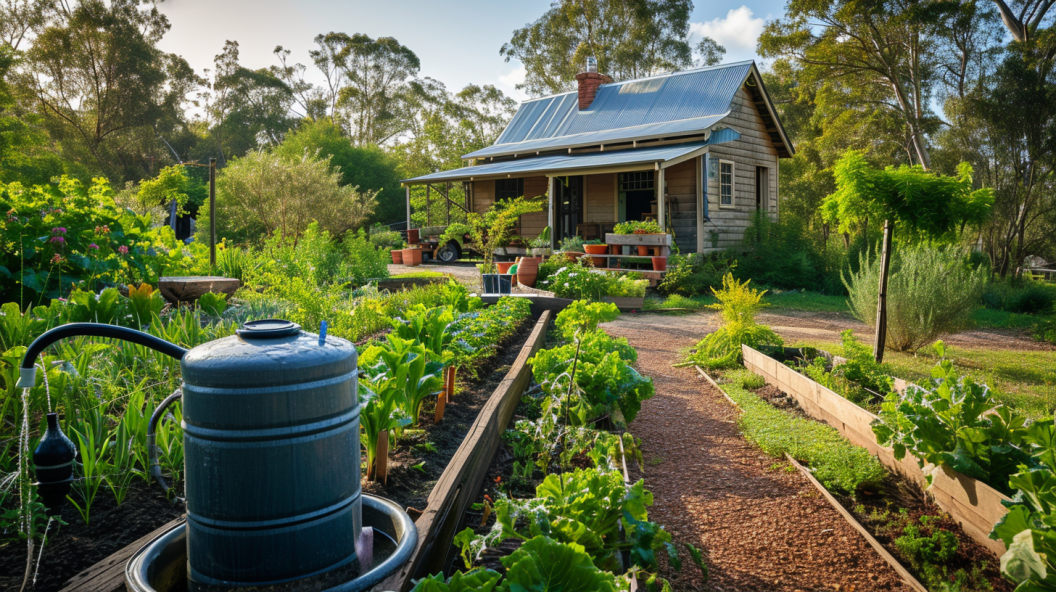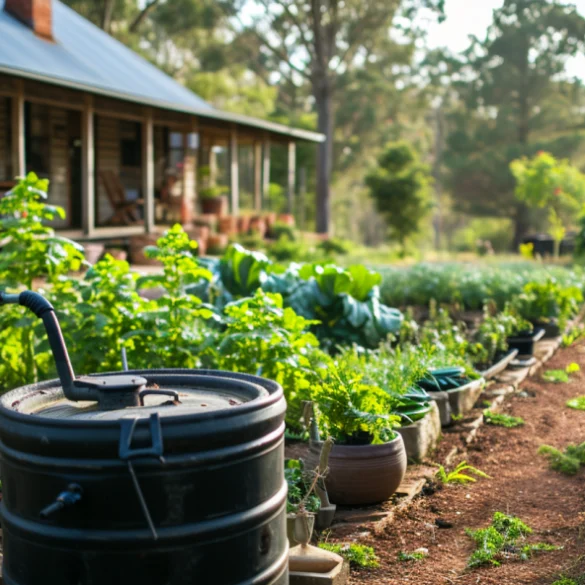Welcome to Sustainable Home Magazine, where we explore the importance of sustainable living and its impact on Australia. In today’s article, we will delve into the many reasons why sustainable living matters in Australia, the benefits it brings, and the various eco-friendly practices you can adopt in your everyday life.
Climate change is a pressing issue that affects us all. By embracing sustainable living, we can significantly reduce our carbon footprint and contribute to a greener future. From renewable energy solutions to sustainable agriculture practices, recycling initiatives to conservation efforts, and even sustainable transportation options, every small change we make can make a big difference in preserving our planet.
As Australia experiences the effects of climate change, such as rising temperatures and extreme weather events, it is crucial to take action. Sustainable living not only helps mitigate these impacts but also creates a healthier environment for future generations.
Key Takeaways for Why Sustainable Living Matters in Australia
- Sustainable living is vital in mitigating climate change and reducing our carbon footprint.
- Embracing eco-friendly practices benefits not only the environment but also our overall well-being.
- Australia offers a range of renewable energy solutions, sustainable agriculture practices, and conservation efforts.
- By adopting a sustainable lifestyle, you can make a positive impact on the environment and inspire others to do the same.
- Together, we can create a more sustainable future for Australia and the world.
The Sustainability Opportunity for Australia
Australia, known for its abundant land and natural resources, has the opportunity to become a clean energy superpower. With its vast potential for renewable energy sources, the country can lead the way in promoting sustainability and reducing its carbon footprint. By harnessing its resources, Australia can export renewable energy, store, and export green hydrogen and ammonia, and tap into mineral resources critical for decarbonization technologies.
Expanding into green-energy production and storage across the value chain would support a local green-energy industrial revolution, creating jobs and economic growth while prioritizing sustainability. By investing in conservation and biodiversity, developing eco-conscious consumerism, and promoting sustainable transportation options, Australia can establish itself as a global leader in the green revolution.
However, there are challenges to overcome to fully realize the potential of sustainability-driven value creation. The absence of a clear political narrative, policy direction, and a national roadmap for low-carbon growth poses significant hurdles. Without a unified approach, the country risks falling behind in the race towards a sustainable future.
Business leaders understand the urgency of the situation and anticipate sustainability-driven disruption. They recognize that inaction comes at a cost, not just to the environment but also to economic stability and competitive advantage. Taking proactive measures to adopt sustainability practices, implement green initiatives, and invest in renewable energy solutions is crucial to ensuring Australia’s long-term prosperity.
“The success of Australia’s sustainability journey depends on the collective effort of government, businesses, and individuals. It requires bold action, collaboration, and a commitment to making sustainability a priority in our everyday lives.”
As the country grapples with these challenges, stakeholders must come together and develop a sustainable roadmap. By addressing the current gaps and aligning efforts towards a shared vision, Australia can maximize its sustainability potential and pave the way for a greener future.
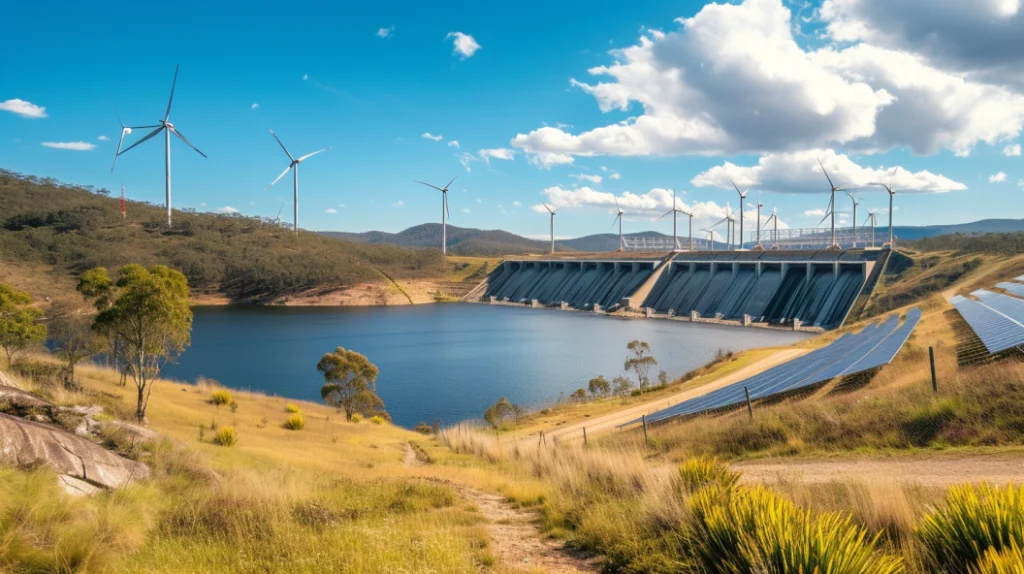
Conservation and Biodiversity
Australia’s unique ecosystems and diverse wildlife make it a global hotspot for conservation and biodiversity. By protecting and preserving its natural habitats, Australia can safeguard its rich biodiversity for future generations. Investments in conservation efforts and sustainable land management practices are essential for maintaining the delicate ecological balance and preventing the loss of endangered species.
Eco-conscious Consumerism
Encouraging eco-conscious consumerism is vital in driving sustainable change. By promoting awareness and providing incentives for sustainable choices, businesses can inspire consumers to adopt more environmentally friendly behaviors. From supporting brands that prioritize sustainability to making conscious decisions about consumption, individuals have the power to make a significant impact on the environment.

Sustainable Transportation Options
Transportation is a significant contributor to greenhouse gas emissions. Expanding access to sustainable transportation options, such as electric vehicles and public transportation, can help reduce carbon emissions and promote greener travel. Investing in infrastructure that supports sustainable transportation and encourages active modes of transport, such as walking and cycling, can create more livable and environmentally friendly communities.
Waste Reduction and Recycling
Effective waste management is crucial for a sustainable future. By implementing waste reduction strategies and promoting recycling initiatives, Australia can minimize its environmental footprint. Encouraging circular economy practices, such as the reuse and repurposing of materials, can help conserve resources and reduce waste sent to landfills.
Sustainability Practices and Green Initiatives
Sustainability should be integrated into all aspects of business operations. Adopting sustainable practices, such as energy efficiency measures and responsible sourcing, can help reduce environmental impact. Implementing green initiatives, such as renewable energy installations and water conservation programs, demonstrates a commitment to sustainability and sets a positive example for other organizations.
Australia has the potential to lead the way in sustainability, but action is required at all levels to turn this opportunity into a reality. By prioritizing renewable energy, conservation, eco-conscious consumerism, sustainable transportation options, waste reduction, and sustainability practices, Australia can create a greener, more sustainable future for generations to come.

Sustainable Communities in Australia
Australia is home to various sustainable communities that prioritize self-sufficiency and sustainability. These communities exemplify the principles of permaculture, regenerative land use, renewable energy, water harvesting, and sustainable lifestyle. They serve as inspiring models for creating a greener and more sustainable future.
One notable sustainable community in Australia is Crystal Waters. Established in 1987, Crystal Waters is the country’s longest-running permaculture community. It has been at the forefront of promoting regenerative land use practices, including organic farming, natural building methods, and permaculture design. The community also embraces renewable energy solutions, with solar panels powering its homes and buildings. Additionally, Crystal Waters utilizes composting toilets to minimize water consumption and promote waste management.
Crystal Waters has paved the way for sustainable living, showing that integration with nature and community spirit can result in a thriving and self-sufficient lifestyle.
Another sustainable community worth mentioning is Witchcliffe. Located in Western Australia, this brand-new ecovillage is committed to achieving complete self-sufficiency. Witchcliffe aims to produce its water through rainwater harvesting and water recycling systems. The community also focuses on growing its organic produce and raising livestock for fresh food. By utilizing renewable energy sources like solar and wind power, Witchcliffe aims to achieve energy independence while reducing its carbon footprint.
Bellbunya is another noteworthy sustainable village located on the Sunshine Coast in Queensland. This community operates entirely on renewable energy and promotes sustainable living practices. Organic produce sourced from local farmers is preferred, ensuring a sustainable and ethical food system. Bellbunya also emphasizes community engagement, offering workshops and events that educate and inspire individuals to live more sustainably.
The Benefits of Sustainable Communities
- Promotion of self-sufficiency and resilience
- Reduction of carbon footprint through renewable energy usage
- Conservation of natural resources and biodiversity
- Promotion of regenerative land use and permaculture practices
- Creation of a sense of belonging and community spirit
These sustainable communities serve as beacons of hope, showcasing alternative ways of living that prioritize environmental stewardship and foster a sustainable lifestyle. By embracing sustainable practices and promoting collaboration, these communities inspire others to create a more sustainable future.
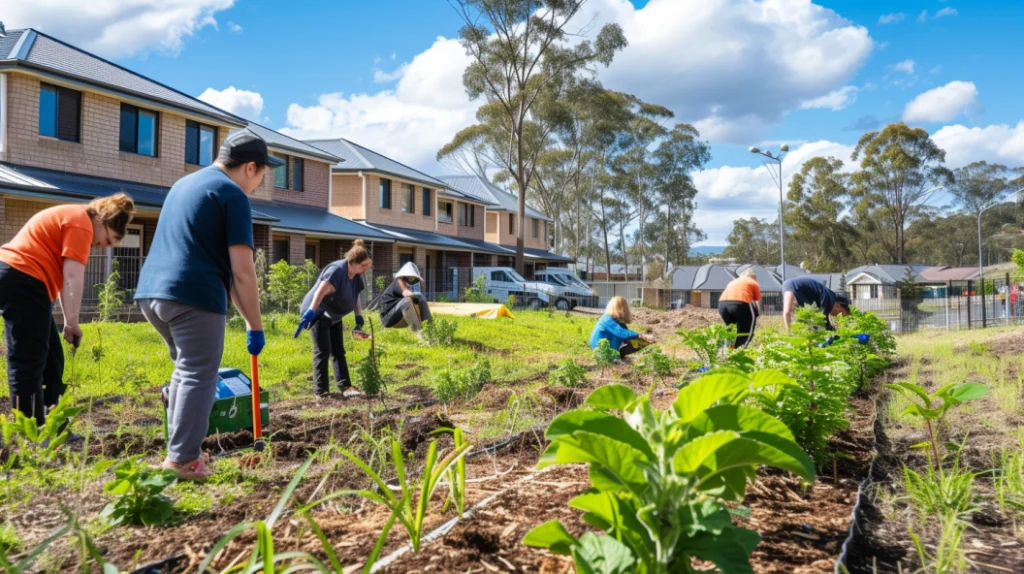
Through their efforts, sustainable communities in Australia contribute to the larger vision of building a greener and more sustainable society. They demonstrate that sustainable living is not only possible but also beneficial for individuals, communities, and the planet as a whole.
The Influence of Sustainable Living on Consumer Behavior
Consumers worldwide, including those in Australia, are increasingly inclined to make more sustainable choices, spurred by the global pandemic and growing environmental awareness. As a sustainable consumer, your expectations of companies are evolving, and you prioritize organizations that contribute to society and prioritize sustainability.
You value transparency in sustainability and rely on reliable information to guide your purchase decisions. Finding sustainable products has become easier due to the growing emphasis on corporate responsibility and transparency in the market. Australian and New Zealand consumers, like you, recognize the importance of sustainability and increasingly factor it into their purchase decisions.
“Sustainable products are no longer just a nice-to-have; they are essential for consumers who prioritize their values and the overall well-being of the planet.”
Australian brands have responded by aligning their strategies with changing consumer expectations. They are now more transparent about their sustainability initiatives, offering detailed information on the environmental impact of their products. This transparency allows you to make informed choices that align with your values and priorities.
Companies must prioritize sustainability and embrace corporate responsibility. By doing so, they can capture the attention and loyalty of sustainable consumers like you. Transparency, reliable information, and easy accessibility to sustainable products are key factors that drive your purchasing decisions.
| Consumer Priorities | Sustainable Products | Transparency in Sustainability | Corporate Responsibility |
|---|---|---|---|
|
|
|
|
These changing consumer expectations have created a powerful shift in the marketplace, encouraging companies to adopt sustainable practices and enhance their transparency in sustainability. As a sustainable consumer, you have the power to shape consumer behavior and drive companies to prioritize sustainability in their operations.
Consumers Engagement with Sustainability in Australia and New Zealand
In Australia and New Zealand, sustainability is a topic that resonates with the majority of consumers. It’s encouraging to see that people are increasingly engaged with sustainability and recognize its importance. However, the level of engagement may vary among individuals, each with their unique attitudes and priorities.
For some, sustainability is closely tied to environmental issues. These individuals prioritize protecting the planet and mitigating climate change through sustainable practices. Others view sustainability through a broader lens, associating it with ethical behavior and social justice. They believe that sustainable choices go hand-in-hand with making a positive impact on society.
Generational differences also play a role in sustainability engagement. Younger generations, such as Gen Z and Millennials, are particularly inclined towards embracing sustainable lifestyle choices. They are vocal advocates for change and are influential in driving behavior change among older segments of the population.
Organizations face the challenge of understanding the diverse sustainability priorities of consumers and communicating transparently. Businesses need to create awareness and educate consumers about the benefits of sustainable practices. This includes making sustainability an easy and affordable choice so that consumers can readily access sustainable products and services.
Understand what sustainability means to consumers and listen to their needs. By effectively catering to their priorities, businesses can build stronger relationships and create a positive impact that aligns with the values of their target audience.
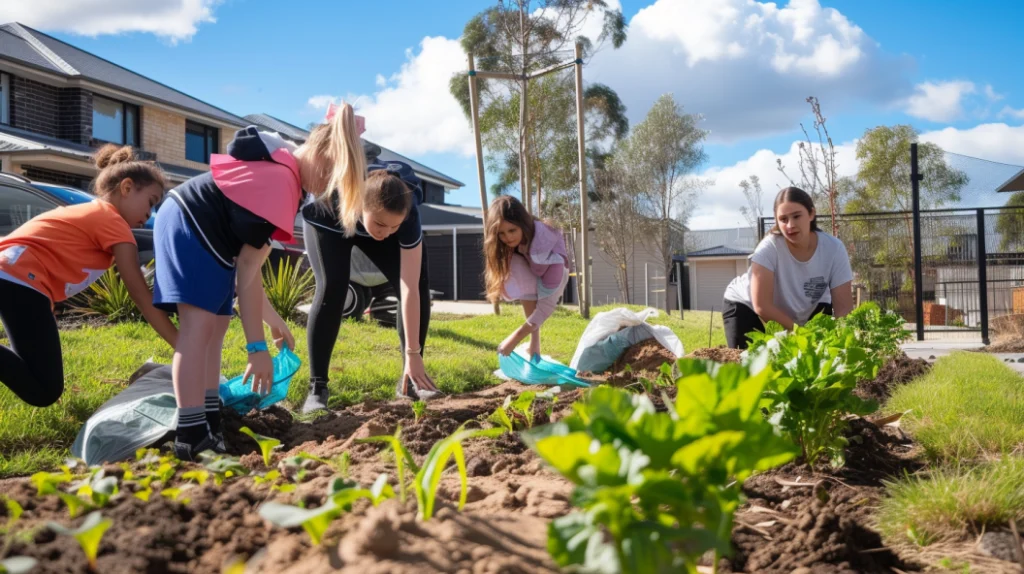
Generational Differences in Sustainability Engagement
Generational differences illustrate the evolving landscape of sustainability engagement. Younger generations are more likely to value sustainability in their purchasing decisions, demanding transparency and sustainable options from companies.
| Generation | Sustainability Engagement |
|---|---|
| Gen Z | Highly engaged; prioritize sustainability in lifestyle choices |
| Millennials | Strong sustainability focus; demand transparency and sustainable products |
| Gen X | Increasingly engaged, but not as influential as younger generations |
| Baby Boomers | Less likely to prioritize sustainability; influenced by younger generations |
The table above highlights the differences in sustainability engagement across generations. Understanding these generational nuances is crucial for businesses, as it enables them to tailor their sustainability strategies to connect with each demographic effectively.
The Impact of Sustainability on Consumer Spending
A significant portion of Australian and New Zealand consumers consider sustainability when making purchase decisions. The growing awareness of environmental issues has led consumers to prioritize sustainable products that align with their values. However, several factors influence consumer spending in this regard.
Firstly, price perception plays a crucial role in sustainable purchase decisions. While some consumers are willing to pay a premium for sustainable products, others may prioritize affordability. Companies should strive to offer competitively priced sustainable options to attract a wider customer base.
Secondly, product quality is a key consideration for consumers. Sustainable products should not compromise on quality or performance. Companies need to ensure that their sustainable offerings are on par with conventional products to gain consumer trust and loyalty.
Furthermore, the availability of information about sustainability credentials can impact consumer behavior. Consumers need transparent and easily accessible information about a product’s environmental impact, certifications, and ethical sourcing. Clear communication of sustainability credentials can help consumers make informed decisions.
“Consumers today are seeking products that align with their values and contribute to a sustainable future. By addressing price perception, emphasizing product quality, and communicating sustainability credentials effectively, companies can tap into the growing demand for sustainable options.”

The Role of Major Retailers
Major retailers play a crucial role in driving sustainable consumption by setting sustainability standards and offering a wide range of sustainable products. They have the power to influence consumer behavior through product availability, marketing strategies, and educational initiatives.
By partnering with sustainable brands and integrating sustainability into their operations, major retailers can create a greater impact on the market. They can also collaborate with industry organizations and government agencies to develop sustainability guidelines and certifications, making it easier for consumers to identify and choose sustainable products.
Case Study: Sustainable Product Ratings
A recent study conducted by Sustainable Home Magazine evaluated the sustainability credentials of various household products available in major Australian and New Zealand retailers. The study assessed factors such as material sourcing, energy efficiency, packaging, and social responsibility.
| Product Category | Brand | Ratings (Out of 5) |
|---|---|---|
| Laundry Detergent | EcoClean | 4.5 |
| Light Bulbs | GreenLite | 4.2 |
| Cleaning Supplies | EcoChoice | 4.7 |
The ratings indicated that EcoClean laundry detergent, GreenLite light bulbs, and EcoChoice cleaning supplies received high scores for their sustainability credentials. These products have gained popularity among environmentally conscious consumers due to their commitment to eco-friendly practices.
“By providing easily accessible sustainable options and participating in initiatives like Sustainable Home Magazine’s product ratings, major retailers are shaping consumer behavior and driving positive change in the market.”
The Role of Brands in Driving Sustainability
In today’s world, brands and companies have a crucial role to play in driving sustainability. As the majority of Australians and New Zealanders recognize, businesses have a responsibility to make a positive impact on the environment and society at large. The COVID-19 pandemic has intensified the focus on sustainability, making it a key priority for consumers. They are no longer satisfied with empty promises but seek genuine commitment and purpose from organizations.
To meet consumer expectations and drive meaningful change, companies must adopt a well-defined sustainability strategy. This includes setting transparent goals and objectives that align with their values. By communicating their sustainability efforts openly and honestly, brands can establish trust and build strong connections with consumers. Transparency fosters accountability and reinforces the belief that companies are actively working towards a sustainable future.
However, it is not enough for brands to simply talk about sustainability. They need to back their words with concrete action. Consumers are looking for meaningful goals that go beyond superficial greenwashing. This means implementing sustainable practices throughout the entire value chain, from sourcing and manufacturing to packaging and distribution. Only by demonstrating their commitment to sustainability in tangible ways can brands win the trust and loyalty of consumers.
“Sustainability is not just a buzzword; it is a commitment to making a difference. Brands that embrace sustainability have a unique opportunity to drive positive change and shape a better future for all.”
Effective communication is also crucial in driving consumer engagement and influencing behaviors. Brands should educate and empower consumers by providing clear information about their sustainable initiatives and products. This enables consumers to make informed choices that align with their values and contribute to a more sustainable future.
A Case Study: Patagonia’s Commitment to Sustainability
A shining example of a brand driving sustainability is Patagonia. The outdoor apparel company has made sustainability an integral part of its identity and business strategy. Through its “Worn Wear” program, Patagonia encourages customers to repair and reuse their clothing, minimizing waste and extending product lifetimes. The company is also committed to using recycled materials and reducing its carbon footprint.
Moreover, Patagonia communicates its sustainability efforts transparently, publishing detailed reports on its environmental and social impact. This level of transparency builds trust and reinforces the brand’s credibility as a true leader in sustainability.
| Benefits of Brands Driving Sustainability | Consumer Expectations |
|---|---|
| Positive brand image and reputation | Consumers expect brands to prioritize sustainability and actively contribute to a greener future. |
| Increased consumer loyalty and brand advocacy | Transparency and meaningful sustainability initiatives foster trust and loyalty among consumers. |
| Competitive advantage in the market | Brands that lead in sustainability attract environmentally conscious consumers who prioritize sustainable practices. |
| Long-term business viability | Sustainability is not just a trend; it is essential for the long-term success and resilience of businesses. |
In conclusion, brands have a pivotal role in driving sustainability. By embracing transparency, setting meaningful goals, and effectively communicating their efforts, brands can meet consumer expectations and create a positive impact on the environment and society. It is only by working together towards a common goal that we can build a truly sustainable future.
Overcoming Challenges and Building a Sustainable Future
While behavior change toward sustainability is increasing, challenges remain. Affordability, information accessibility, and perceived trade-offs in quality prevent wider adoption of sustainable practices. Organizations must address these challenges by making sustainability more accessible and affordable for consumers. Clear communication, transparency, and collaboration are key to building a sustainable future. By integrating sustainability into core strategies, overcoming organizational inertia, and leading transformative change, businesses can drive the transition to a greener, more sustainable society.
Your commitment to sustainability initiatives is essential for overcoming the challenges that lie ahead. Encouraging behavior change and making sustainable choices more accessible to consumers will be instrumental in creating lasting change. Here are some strategies to help you navigate these challenges:
Educating and Engaging Consumers
Achieving behavior change starts with providing consumers with the necessary information and incentives to make sustainable choices. Create engaging educational campaigns that highlight the environmental and social benefits of sustainability. Emphasize the positive impact their actions can have on the planet and future generations.
- Promote sustainable practices through workshops, webinars, and community events.
- Collaborate with influencers and local leaders to spread awareness and drive behavior change.
- Offer incentives, such as discounts or loyalty rewards, for choosing sustainable options.
Improving Accessibility and Affordability
One of the main barriers to the widespread adoption of sustainable practices is the perception that they are not affordable or accessible. Take steps to address this by:
- Ensuring that sustainable products and services are competitively priced.
- Exploring partnerships with suppliers and manufacturers to reduce costs.
- Providing financing options or subsidies to make sustainable choices more affordable.
Prioritizing Organizational Commitment
Organizational commitment to sustainability is critical for driving change. Ensure that sustainability goals are integrated into your core strategies and operations:
- Establish clear sustainability targets and regularly track progress.
- Allocate resources and dedicate teams to drive sustainability initiatives.
- Provide training and support for employees to embrace sustainable practices.
| Challenge | Strategy |
|---|---|
| Affordability | Collaborate with suppliers to reduce costs and offer financing options. |
| Information Accessibility | Develop educational campaigns and engage with influencers to spread awareness. |
| Perceived Trade-offs in Quality | Ensure that sustainable products and services meet or exceed customer expectations. |
| Organizational Inertia | Integrate sustainability into core strategies and provide resources for implementation. |
By addressing these challenges and committing to sustainable practices, you can play a vital role in building a more environmentally friendly and socially responsible future.
Final Thoughts on Why Sustainable Living Matters in Australia
Sustainable living matters in Australia because it offers numerous benefits for a more sustainable future and environmental stewardship. By embracing sustainable practices, individuals, businesses, and communities can reduce their environmental impact and contribute to mitigating climate change. Consumers play a crucial role in driving change by demanding sustainability and making conscious choices in their purchasing decisions.
Companies, too, have a responsibility to prioritize sustainability and demonstrate corporate responsibility. By committing to meaningful goals and adopting sustainable practices, organizations can lead the way in creating a more sustainable future. Collaboration is key, as stakeholders from different sectors must come together to drive systemic change and address the pressing environmental challenges we face.
As Australia moves forward, it is essential to recognize that a sustainable future depends on the collective efforts of all. By working collaboratively, individuals, businesses, and communities can create positive, lasting change and pave the way for a greener and more sustainable society. Together, we can build a future that prioritizes environmental stewardship, embraces consumer-driven change, and reflects a shared commitment to corporate responsibility.
FAQ
Why does sustainable living matter in Australia?
Sustainable living in Australia is important because it helps reduce the environmental impact, mitigate climate change, and promote a greener future. It allows individuals, businesses, and communities to make eco-friendly choices that contribute to a more sustainable society.
What are the benefits of sustainable living?
Sustainable living offers numerous benefits, including conserving resources, reducing waste, promoting renewable energy solutions, and preserving biodiversity. It also helps create healthier living environments and fosters a sense of responsibility towards the planet.
How does sustainable living impact climate change?
Sustainable living practices, such as reducing carbon emissions and increasing the use of renewable energy, can help mitigate climate change. By minimizing our carbon footprint, we contribute to reducing greenhouse gas emissions and slowing down the negative effects of climate change.
What are some examples of sustainable agriculture practices?
Sustainable agriculture practices include organic farming, crop rotation, water conservation, and using natural fertilizers. These methods aim to protect the environment, maintain soil health, and minimize the use of chemicals in food production.
How can recycling initiatives contribute to sustainable living?
Recycling initiatives help reduce waste and conserve resources. By recycling materials, we can minimize the need for new production, save energy, and reduce pollution. Recycling also plays a crucial role in creating a circular economy where materials are reused, reducing the strain on natural resources.
What efforts are being made for conservation in Australia?
Australia is actively involved in conservation efforts, including the protection of native species and habitats, the establishment of national parks, and the implementation of wildlife conservation programs. These efforts aim to preserve biodiversity and ensure the long-term sustainability of Australia’s unique ecosystems.
What are some sustainable transportation options?
Sustainable transportation options include using public transportation, biking, walking, carpooling, and driving electric vehicles. By choosing these alternatives to traditional car usage, individuals can reduce emissions, save energy, and contribute to cleaner air quality.

